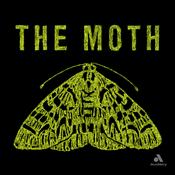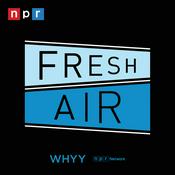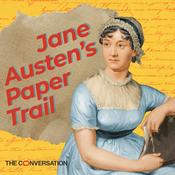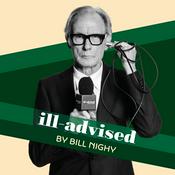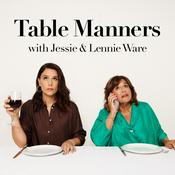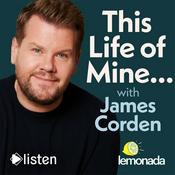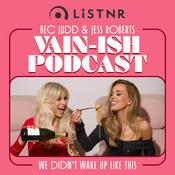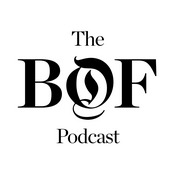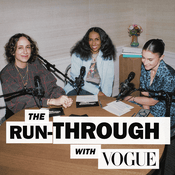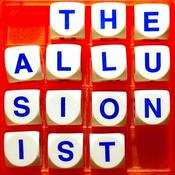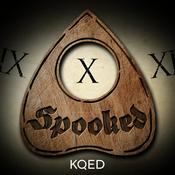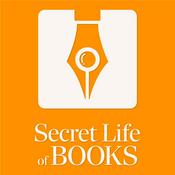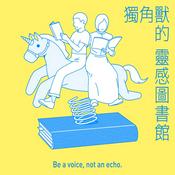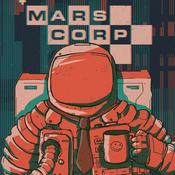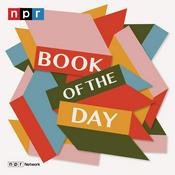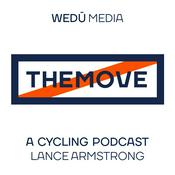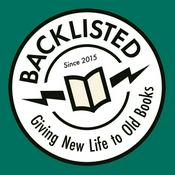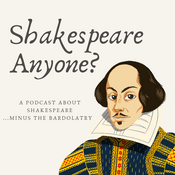Available Episodes
5 of 105
- Episode 381- Arleene Correa Valencia: From rural Mexico to the Napa Valley and back, fulfilling a family dreamNapa, CA-based artist Arleene Correa Valencia talks about: Why she lives in Napa, CA, and the two distinct versions of the town, for the wealthy and for the poor ("you're either the owner of the vineyard, or you're working the vineyard," as she put it); how she's the first generation to not be working the vineyards, his dad having worked the vineyard for a period before transitioning to hand-painting etched wine bottles for a winery (which he had to ultimately leave for lack of being paid enough because he didn't have an MFA); her favorite wines by grape (Pinots and Cabs from Sonoma mainly), and more recently a master fabricator color theorist and surface touch-up artist; making her dad's dreams to become an artist come to fruition through her; how she always refers to the work she makes as 'ours,' assuming everyone knows that her father always has a hand in the projects, in addition to consistently collaborating with makers from her culture of origin; the letters she exchanged with her father, while he was working to lay a foundation for the family to move to the U.S., among the artworks acquired by Stanford's Cantor Arts Center; her complicated DACA (Dreamer) status, and the exhibition she was able to have in Mexico (in Puebla, about 2 hours from Mexico City) which ultimately allowed her to apply for, and get, a green card; how she had to defer her dream to go to a 4-year university or art school until she received DACA status, and then she got a Diversity Scholarship that allowed her to attend California College of the Arts, which she would never otherwise would have been able to afford; how one of her 1st interviews was for someone interested in learning about being undocumented in the arts (originally published in Hyperallergic, she had to have it taken down for legal reasons to protect her); how her various supporters propelled her into her art-making and her art school education, and in turn the questions she asks herself about how she can help others, undocumented and otherwise… This podcast relies on listener support; please consider becoming a Patreon supporter of the podcast, for as little as $1/month, here: https://www.patreon.com/theconversationpod In the 2nd half of our conversation (available on Patreon), Arleene talks about: How her mom comes from a family with 36 brothers and sisters, so is part of an enormous extended family; the BRCA mutation in her family, in which bodies are much more susceptible to various cancers, including breast cancer and ovarian; why ICE hasn't been active in the Napa Valley area, very likely because people of wealth and/or power won't allow their wine supply to be affected; how aware she is of her career and her sales, and that she's proud of her production rate and the work her gallery is doing with her; the demand for her truck paintings, and why she has a need to make those paintings, not producing them for a paycheck; when she requested a collector give her more time to finish a piece that she wasn't happy with, and re-made it; how integral her dad is to her work and her process, and how he's celebrated along with her, if only through his tremendous pride in her, and that it wouldn't all happen without him; the work they do with a tattoo family, and how it's similar to the dynamic that she and her dad as a family do together, which she acknowledges is a bit like the man behind the curtain; her Tochtli (rabbit) tattoo, a symbol in her family that signifies selflessness and the ultimate sacrifice; how the evolution of her being tattooed, which started when she was 18, has been about honoring the story of her ancestry and claiming her identity, and how her brothers, like her, are acquiring full body suits of tattoos.--------53:41
- Episode 380- London-based photographer and writer Michael Collins on the perils of photography, and art criticism, and why to give your viewers the benefit of the doubtLondon-based photographer and writer Michael Collins talks about: The flat where he's lived for 35 years, which is getting 'Wallace & Gromit' crowded; how he keeps film in his deep freeze (aka freezer) as opposed to anything edible, and how he's happy to shop for the day, while he points out that Brits see American refrigerators and are overwhelmed by how large they are; and by the way, we're also bludgeoned by advertising here, compared with the UK and Europe; how he sees our social media consumption as giving in to the impulsive at the expense of the rational, a battle he gives in to daily for a half hour on IG…and how sometimes, you just want to look at a panda falling out of a tree; why readers (of books) make better viewers of artworks; how when his photographs are printed at full scale (4 x 5 feet) you can walk into them and how part of photography's schtick is that it's nosy, that it admits everything in it; his takeaways from giving a presentation at the Hampstead Photographic Society, in which have the members bolted for the door at the break; the importance of 19th century photography to understanding the history of photography, and how it's not shown enough in museums (at least in London); how he started studying politics, but switched over to art, initially stumbling into photography as an editor at a teenage girl's magazine, then moving to The Observer, and then he became picture editor at the Daily Telegraph, where he realized, amidst a more rushed editorial structure that went with predictable stock photographers, that the most interesting photography was not there to fulfill another's agenda, but in pursuit of independence, to fulfill its own agenda. This podcast relies on listener support; please consider becoming a Patreon supporter of the podcast, for as little as $1/month, here: https://www.patreon.com/theconversationpod In the 2nd half of our conversation (available on Patreon), Michael talks about: The challenges of evolving and following your own path at the expense of taking the more marketable route, which means maintaining your integrity, and how his photographs, and his writing are both better than ever; the complex and fulfilling experience he had visiting and re-visiting a Jeff Wall museum exhibition; how the photographer Martin Parr dominates the scene in Britain, and how all his pictures look roughly the same, and yet he's kind of this hero in the country, through the 'steamroll of publicity,' and how there's far more depth, wealth and nuance out there than we're being allowed…; his first art review (for The Daily Telegraph), of Andreas Gursky's exhibition at Tate Liverpool, which uncovered a surprising digital edit, one he was turned on to by one of the museum custodians, and when he wrote the review that included his misgivings about the work, the Tate press office told him he was being cruel (to which he replied, "that's not being cruel, that's being honest"), and how another artist's agent threatened to sue for a negative review; our respective takes on art writing and criticism, in terms of what he appreciates vs. can't tolerate, and what I appreciate and can't tolerate; more about the world of magazine editing, which he describes as being a lifetime ago…; and finally, to wind down our conversation, we talk about his book, Blind Corners, which features several essays exploring across the spectrum of photography and photography's history; in particular we review a passage where he compares Americana via Kodachrome and Hollywood light with the dull, austere light of Britain, and he goes on to call out Dubai as the culmination of late capitalism.--------56:50
- Episode 379- artist Linnéa Gabriella Spransy – growing up in a commune, Yale grad school, working as a living artist in Kansas City, and co-founding the gallery Bridge ProjectsPasadena-based artist Linnéa Gabriella Spransy talks about: Growing up between Wisconsin and a commune in Oregon, the latter which she describes as a complete commitment more than an experiment (the town was Wildeville, Cape Junction being the closest city); how you radically live out the life of Christianity, including giving away all their stuff, and how her father played in a Christian glam rock band that toured the world; having a positive commune experience, yet winding up 'inevitably becoming part of the machine,' aka capitalism, despite her wonderings as a child, which are still there; her period living and working in Kansas City for seven years after grad school at Yale, figuring out which voices to use in her work and make enough to have a house and a nice studio, and yet felt claustrophobic by its limitations and where she saw herself in the future if she had stayed there; her mantra in Kansas City, "if there's no pressure, I still do it," in determining what work she would keep making no matter what; her intense experience at Yale, where everyone, even the future stars, received harsh criticism for a range of reasons; the big advantages of artists who are extroverted charmers, especially in comparison to the 'ambiverts,' as Linnea calls them (and who we both essentially identify as), and even more so the more misanthropically aligned artists; her tenure co-founding Bridge Projects, a spiritually-oriented gallery in Hollywood, which had the misfortune of opening days before the pandemic. In the Patreon BONUS episode (379A), twice as long as episode 379/the public feed, Linnea also talks about: Her complex take on the existential state we're in politically and culturally in the context of history, in which she identifies with people from numerous eras of the past, confronting their own challenging times and what we have in common; her experience living in Pasadena as a diverse place with a significant history and culture, and, as a neighbor to Altadena, what their respective roles have been as neighborhoods for artists in the context of the Eaton fire; her different working methods, from the through-the-process-oriented abstraction, as opposed to her much more research-based figurative work…she describes each of them as working different muscles; in the context of her 'growing a human person,' as she put it, the importance of having a rich internal life, interesting things, interesting people…; and whether she should get a studio in an artist building downtown, vs. sticking with her garage studio at home. She also asks (and to some extent answers) a question in support of the future artist advice podcast, The Intrepid Artist.--------44:53
- Episode 378: Artist Camilla Taylor- "My House Burned Down"Camilla Taylor, Los Angeles artist, and curator of "My House Burned Down" (at Track16 Gallery), talks about: Her childhood with complicated religious origins, between her Mormon LDS father and her mother who branched off to start her own organization (some might say 'cult,' per Camilla), and how art, for her and many artists, can often fit the functions that people are often looking for in religions (including being part of something bigger than themselves); how she's really good at compartmentalizing, seeing difficult experiences from her life as existing in rooms in a house, where she can shut the door to any given room; the epic story of experiencing her house burning down in the Eaton Fire in Altadena-- from her 16-hour drive home from the Sitka Center residency in Oregon, to seeing it when she approached her part of the San Gabriel Valley, to arriving home and having the wind lift her off her feet, to their belated evacuation; and subsequently how she found out her and her partner's house, and her studio, had burned down, and that that process of mourning has been like; how trauma has manifested from losing her home and studio, and the range of reactions she's received, including a lot of suggestions that are tone-deaf; what insurance will cover, and the studio spaces she's been loaned/gifted for now, putting off the need for having to rent a studio for the first time (since studios have always been attached to her living spaces). This podcast relies on listener support; please consider becoming a Patreon supporter of the podcast, for as little as $1/month, here: https://www.patreon.com/theconversationpod In the 2nd/Patreon Bonus half of the conversation, Camilla talks about: How, because of her visibility as an artist, she's been more fortunate than many others who lost homes/studios in the fire by receiving a range of resources that artists less visible have not; the lawsuits against Southern California Edison, who allegedly started the Eaton fire; the group show she curated, 'My House Burned Down,' at Track 16 Gallery, which included four artists who lost their homes in the Eaton fire, and four artists who lost their homes in prior fires, and how the show addressed a commonality in losing one's home as an artist, with an extra emphasis on materiality; how while she doesn't know what the right reaction is, when people learn that her house (and studio) burned down in a fire, she knows that the reaction that she's going to rise above it, like the phoenix from the ashes, is absolutely not the reaction to have, because it's hurtful especially in its negating of what happened to her; and we have an extensive exchange about what I have long referred to as "the P-word," as in 'practice, as in 'my art practice, a word Camilla also hates, and she talks about why language has become so important in art/the art world, including her take that artists overcompensate in art because, essentially, we/art is so unimportant to everyone else; and Camilla shares her favorite and least favorite art-speak words; and how in her teaching she's honest with students about how their work affects her, as opposed to making art historical comparisons.--------52:24
- Episode 377- "An artist walks into a bar…" Guy Richards Smit on his New Yorker cartoons, his paintings, and humor in artBrooklyn-based artist and sometimes New Yorker magazine cartoonist Guy Richards Smit returns to the podcast eight years after his first visit to talk about: His admitted high self-regard, paired with self-awareness, which we identify as being rare; our respective experiences and takes on artist blowhards; his history with cartooning, going back to his obsession with gag cartoons, going back to a New Yorker cartoon book he read at his grandparents' house when he was a kid; how he started making his own gag cartoons; the steps he took to build his cartoon portfolio, leading to getting published in the New Yorker after a year and a half of submitting (which is much quicker than some); the cartoon he made for the New Yorker website, the 'Daily,' that went viral (receiving 1500 comments, not to mention other viral stats), including getting re-created in Turkish by a Turkish cartoonist; how he actually sees the cartoons as sketches for paintings (and gets quite painterly in the making of them); how about half of his cartoons are more insider-baseball-art cartoons, and the one he made that references one artist that he had in mind, although several reactions interpreted it as another artist, whom Guy actually heard from, wondering if it was about them. In the 2nd half of our conversation, available to Patreon Supporters of the podcast, you'll hear Guy talk about: How the parameters for where art can come from have changed, and how humor in art is still held, especially in the U.S., as a bit off limits; how his desire to paint a rock led to his Sisyphus cartoon (every cartoonist wants to do a Sisyphus cartoon); his desire to make a put out cartoons that are beautiful, not really a quality that the cartoon editor, or even cartoon consumers, are necessarily looking for; why the New Yorker cartoonists haven't been able to form a union, which is related to why there aren't really any other high-profile venues for gag cartoons to be seen; how he didn't have a gallery for 15 years, and was "forced to sell" his own work, using Instagram successfully for sales in the pre-algorithmic takeover era, when he got three to four times more engagement than he gets now (and thankfully for him he now doesn't require sales thru IG as much); his new dealer, Adam Cohen, who opened the gallery A Hug from The Art World three years ago; and how wanting to draw a Miro sculpture led to one of his most popular and most responded to cartoons at the Independent art fair in NYC this past spring. This podcast relies on listener support; please consider becoming a Patreon supporter of the podcast, for as little as $1/month, here: https://www.patreon.com/theconversationpod--------51:38
More Arts podcasts
Trending Arts podcasts
About The Conversation Art Podcast
A podcast featuring both one-on-one and three-way roundtable conversations with contemporary artists, dealers, curators, and collectors--based in Los Angeles, but reaching nationally and internationally.
Podcast websiteListen to The Conversation Art Podcast, Style-ish and many other podcasts from around the world with the radio.net app
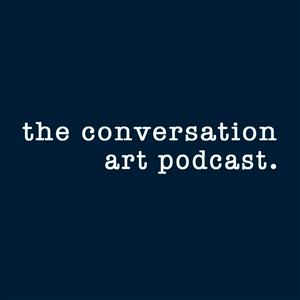
Get the free radio.net app
- Stations and podcasts to bookmark
- Stream via Wi-Fi or Bluetooth
- Supports Carplay & Android Auto
- Many other app features
Get the free radio.net app
- Stations and podcasts to bookmark
- Stream via Wi-Fi or Bluetooth
- Supports Carplay & Android Auto
- Many other app features


The Conversation Art Podcast
Scan code,
download the app,
start listening.
download the app,
start listening.



